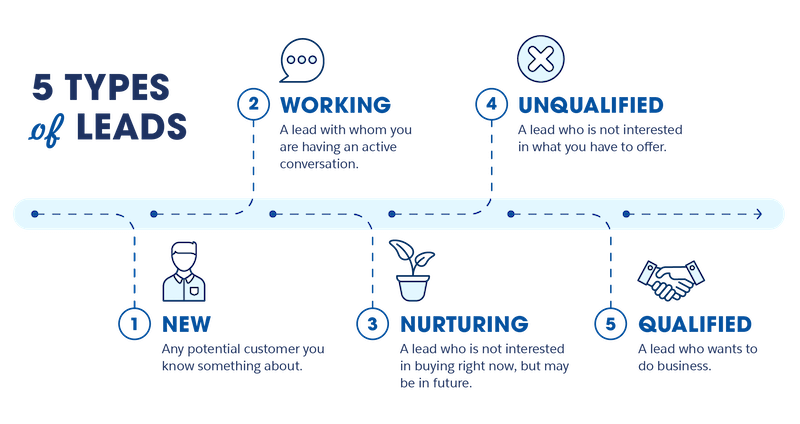A robust lead management system is the backbone of sustainable business growth. By streamlining processes and leveraging data-driven strategies, it empowers teams to convert high-potential leads into loyal customers. Effective lead management transforms raw prospects into valuable opportunities, maximizing conversions and driving revenue. A smart platform equips businesses with intuitive tools to qualify, distribute, and nurture leads efficiently, saving time while boosting results.
The Lead Management Process: From Capture to Conversion
- Lead Capture: The journey begins with capturing high-potential leads through targeted channels like landing pages, social media, or referrals. A well-designed system ensures no opportunity slips through the cracks.
- Activity Tracking: Monitoring lead interactions—such as website visits, email opens, or product inquiries—reveals their interests and intent. These insights allow businesses to tailor their approach, aligning offerings with lead preferences.
- Lead Qualification: Not all leads are equal. Qualifying leads based on intent, budget, and product fit ensures only high-value prospects move forward. Poor qualification wastes resources on uninterested or unfit leads, reducing efficiency.
- Lead Distribution: Assigning leads to the right teams or regions based on product or service alignment accelerates the sales process. Automated distribution tools ensure leads are handled promptly by the most relevant team members.
- Lead Nurturing: Building relationships through personalized engagement—via email campaigns, social selling, or webinars—keeps leads warm and drives conversions. Data shows that companies with strong nurturing strategies see up to 50% higher conversion rates and 33% lower acquisition costs.
Why Lead Management Matters
A well-executed lead management system delivers measurable benefits:
- Enhanced Visibility: Organized lead data and interaction tracking provide a clear view of the sales funnel, enabling informed decision-making.
- Improved Alignment: Sales and marketing teams work in sync, capitalizing on opportunities and reducing friction.
- Higher Efficiency: Streamlined processes minimize wasted effort, allowing teams to focus on high-value leads.
Conversely, a weak or absent system leads to missed opportunities, poor qualification, and fragmented team efforts, ultimately hurting revenue.
Best Practices for Effective Lead Management
To maximize the impact of your lead management system, adopt these proven strategies:
- Item 1
- Item 2
- Define Clear Processes: Establish a standardized lead management workflow to foster collaboration and reduce internal conflicts.
- Leverage Data-Driven Insights: Track key metrics like email engagement, pipeline velocity, call outcomes, and lead source performance to optimize strategies.
- Diversify Nurturing Tactics: Use a mix of email marketing, social media engagement, and interactive content like webinars to connect with your audience.
- Invest in Technology: Choose a platform with intuitive tools for automation, analytics, and CRM integration to streamline operations.
- Continuously Optimize: Regularly analyze performance data to refine processes, allocate resources effectively, and boost ROI.
Conclusion
A strategic lead management system is more than a tool—it’s a catalyst for growth. By capturing, qualifying, and nurturing high-quality leads, businesses can build stronger customer relationships and drive consistent revenue. Implementing best practices and leveraging modern platforms ensures your team stays ahead in today’s competitive landscape. Start optimizing your lead management process today to unlock your business’s full potential.

